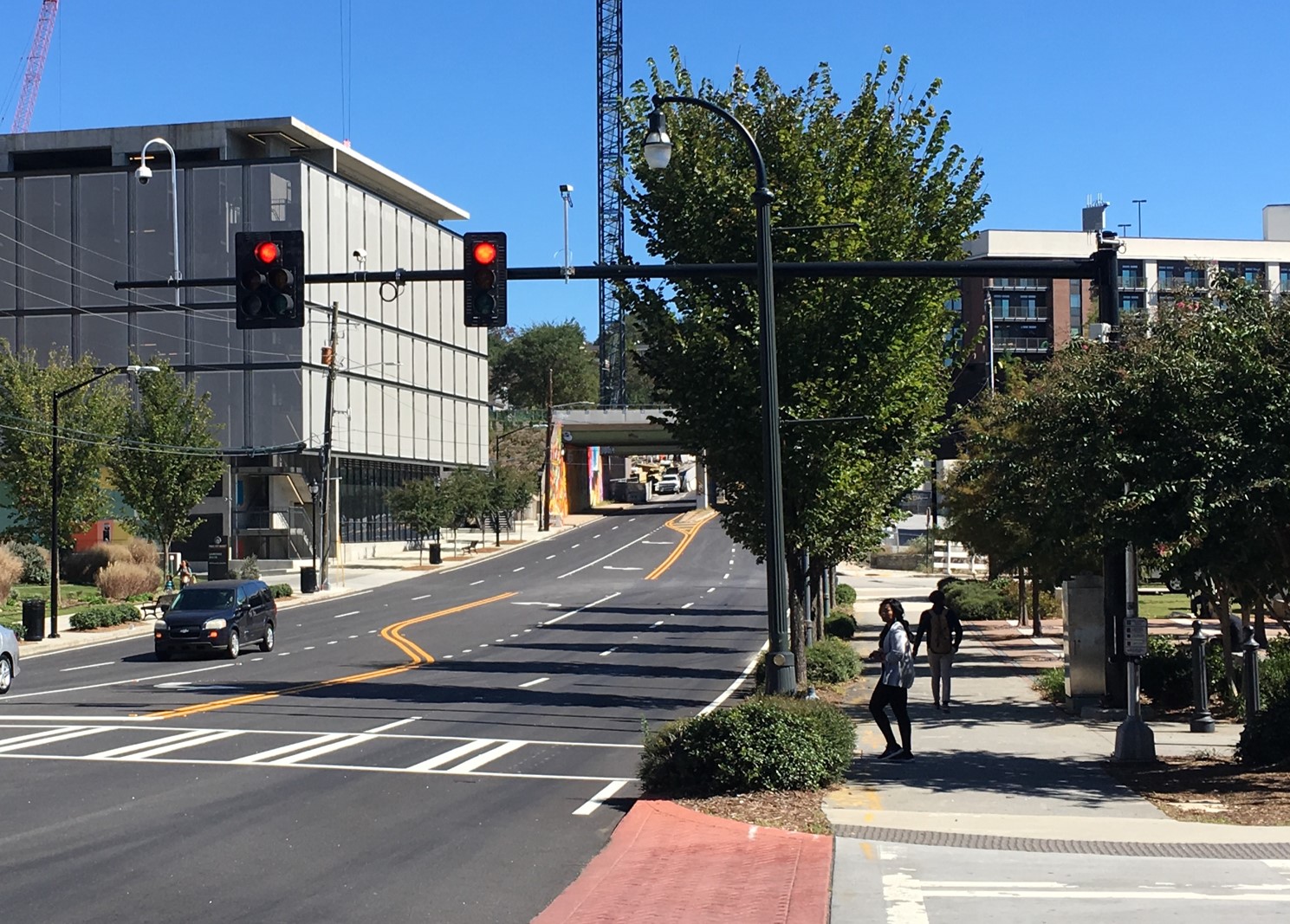North Avenue Smart Corrior
To achieve the vision of leveraging information sharing between vehicles and the infrastructure to enhance mobility and safety, the USDOT is supporting on-road deployment and testing of Connected Vehicle technologies. The field deployments of CV technology to this point have mostly been state-led and consist primarily of Road Side Units. While the penetration of On Board Units is expected to increase over the years, it will require many years before saturation is achieved. This study assesses feasibility aspects of using a real-time data-driven transportation simulation model to generate synthetic realistic Basic Safety Messages that enable the computation of performance metrics that would otherwise be infeasible, and thereby provide a bridge over a low CV penetration scenario to a high CV penetration environment. This helps the evaluation and visualization of network performance indices to provide dynamic operational feedback in a real world environment, in a connected vehicle context. In this study, a real time data driven traffic simulation model, is developed that is capable of adapting to a mixed reality environment by filling in the data gaps that are typical in such a high speed data scenario. The hybrid model represents a traffic corridor equipped with smart devices generating high velocity, high volume datasets with limited shelf-life. Signal controls and vehicle volumes at the intersections are driven by real-time data. An optimized architecture is developed to enable control of the signals and the vehicle volumes using real-time data from in-field detectors, and real-time processing of the vehicle trajectories from the simulation output to generate travel-time, energy, and emissions performance indices.
Visualization Website [Archived Data]
Visualization Website [Real-time]